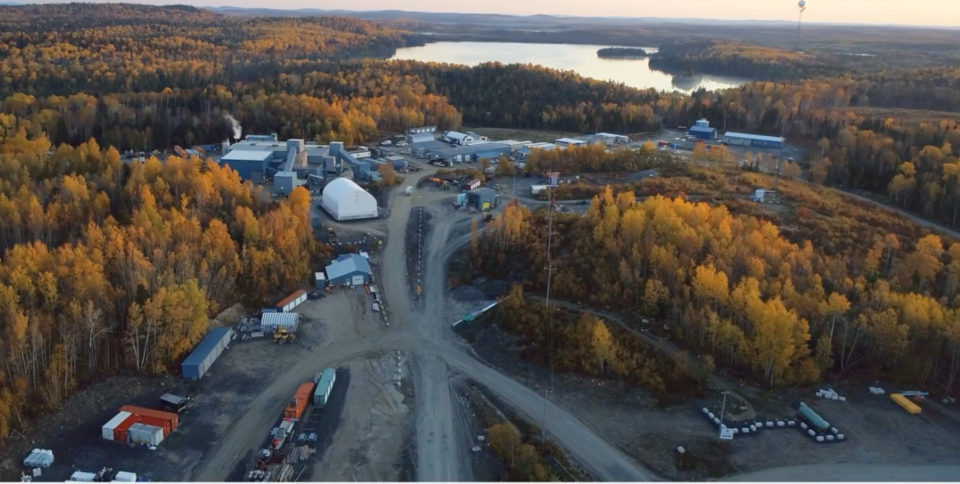Growth is most definitely in the cards for Alamos Gold’s Island Gold District mine complex, outside Dubreuilville.
The Toronto gold company released its base case life-of-mine plan to boost mining and milling rates over the next 20 years. Given the gold potential on its 60,000-hectare land package, Island Gold appears to have the legs to last for a long time.
The two-mine operation consists of the underground Island Gold Mine and the open-pit Magino Mine. The company acquired Magino, next door to Island Gold, from Argonaut Gold last year.
“The Base Case Plan for the Island Gold District outlines an attractive, long-life operation that is expected to become one of Canada’s largest, lowest-cost, and most profitable gold mines,” said company president-CEO John McCluskey in a statement.
The plan is to boost annual gold production by 43 per cent — to 411,000 ounces a year — starting in 2026 and over the next 12 years. Gold production will level out over 20 years to an average of 306,000 ounces a year.
The total gold reserves of the two mines has increased by 48 per cent to 6.3 million ounces at a grade of 2.23 grams per tonne. The Island Gold Mine is the superstar of the two, its reserve is up 80 per cent to 4.1 million ounces, grading 10.85 grams per tonne since the end of last year.
Alamos said reserves are expected to grow once gold resources are converted over. Converting resources to reserves is crucial in mine development to prove that a portion of a discovered resource is actually economically viable to mine.
To meet the challenge, Alamos is sinking a new shaft, to be ready by 2026, and building a new paste plant to meet the coming production jump. This is part of a third wave of expansion at Island Gold.
The new shaft will allow ore and waste to be skipped to the surface instead of trucked, which will drive production higher while lowering costs. This project will double underground mining rates at the Island Gold Mine to 2,400 tonnes per day.
Over the next two years, the company expects to spend $453 million on the property, mostly finishing up the shaft construction project and for a planned mill upgrade to expand milling capacity to 12,400 tonnes a day. Given record-breaking gold prices, Alamos said the Island Gold District can self finance these activities and generate significant cash flow beyond 2026.
A beefed up powerline is being constructed into the site, which will be switched on in 2026.
A more in-depth expansion study, on what the Island Gold district will evolve into, is due out in the fall.
“We expect this (study) to include a larger mineral reserve through ongoing mineral resource conversion, and a potential further expansion up to 20,000 tonnes per day, supporting an even larger, more valuable, and profitable operation,” added McCluskey.
On the exploration front, Alamos said the area around both mines, geologically known as the Michipicoten Greenstone belt, still shows signs of significant gold potential, especially at depth. There looks to be a pipeline of opportunities across the property, including at the historic and shuttered Cline, Edwards and Kremzar mines, which could make a case for an even larger mill expansion to supplement the ore coming out of the Island Gold and Magino mines.
“Longer term, we see excellent opportunities for that value to continue to grow through ongoing exploration success at Island Gold, and a number of emerging higher-grade regional targets that have the potential to support multiple sources of ore within an expanded mill,” said McCluskey.




